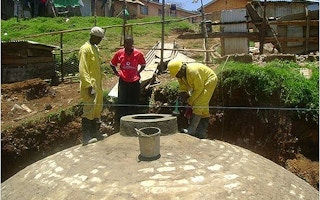More than a million extra small biogas plants in Nepal could stop forest destruction and reduce the country’s large import bill for fossil fuels − but much more investment is needed to help the impoverished country reach its goals.
The government’s 2016 Renewable Energy Subsidy Policy is seeking to ramp up investments in power sources such as small-scale hydro, solar, wind and biomass,
One of the habits it is trying to break is the use of wood for cooking. Currently, 64 per cent of the population, particularly the rural poor, rely on supplies of firewood to prepare their daily meal, causing the destruction of the country’s forests.
The whole programme has a significant way to go, because in 2012/13 renewables accounted for only 1.66 per cent of the country’s total energy supply, according to the government’s Alternative Energy Promotion Centre (AEPC).
Major waste
The largest established form of renewables in this mountainous country is micro-hydropower, with 36 MW of electricity, but biogas also has great potential.
This is because the availability of dung − the major waste used for biogas production in rural areas − is calculated at 12 million tonnes a year, enough to fuel 1.49 million household biogas plants in Nepal. And the methane produced by each micro-plant is calculated to save 1.25 trees a year.
The use of readily-available materials – cattle dung and kitchen waste in rural areas, and sewage and kitchen waste in towns – could fuel a biogas boom to head off a looming energy crisis caused by the ever-increasing import of fossil fuels.
The AEPC says that Nepal, through the use of the existing 320,000 biogas plants and the avoidance of cutting tree cover, is already reducing its overall greenhouse emissions by more than one million tons a year. This is saving 400,000 trees annually, and reducing natural gas imports from India.
A second study by the Biogas Sector Programme says that the biogas replaces 800,000 litres of kerosene.
Known potential
Unfortunately, despite its known potential, the lack of investment in larger-scale biogas plants in urban areas has led to a surge in imports of liquefied petroleum gas (LPG). This has now reached 21 per cent of households.
Despite 670 tonnes of biodegradable waste being generated every day in 58 municipalities across the country, the total number of large-scale biogas plants is only 350. Lack of regular maintenance has led to some of these breaking down
The recently-announced government incentive to subsidise and provide loans to boost renewable energy should reduce this decline. The declared aim is to resuscitate and expand the renewable energy source that has already proved to be a realistic way of reining in the need for fossil fuels.










